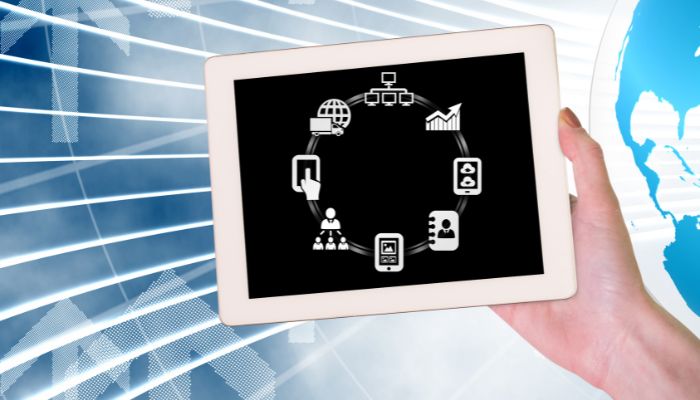Robotic Process Automation or RPA is giving organizations a cost-effective route to streamlining their HR processes. Benefits administration is one of the most cumbersome tasks for HR professionals, and RPA helps in simplifying it and making it less error prone. Even those organizations that are planning to outsource this HR activity will be able to make the most of this novel technology as most HR service providers have already started using RPA. It automates the communication between all the stakeholders, including organizations, employees, and service providers amongst others. This considerably reduces the chances of mistakes during exchange of information and responsibilities between parties.
What is Robotic Process Automation? RPA is an AI-based innovation that helps people in automating their digital processes and tasks. RPA is available in the form of software, with the help of which users can create bots that have the ability of learning, imitating, and executing business processes that work under set guidelines. These bots are created by observing and learning from humans. What users need to do is have their RPA bots observe what they are required to imitate. Similar to humans, these bots can interact with all the different systems or applications in front of them. And unlike humans, RPA bots can function 24/7. What’s more, they are faster, more precise and reliable than humans.
You might also be interested to read: HR’s Role In Building A Workforce For Digital Future
What can RPA do for organizations? RPA bots come with the same skills as humans, and in some cases, even more. These bots can be considered the digital workforce by organizations that have the ability to work with all the applications and systems they use. Some of the things bots can do include logging into systems, scraping and extracting data, moving files, making calculations, connecting to APIs, analysing emails, and more. Automation with bots doesn’t require organizations to make changes to their application, systems, or processes because they acclimatize to any environment. RPA software is easy to install and use, and can also be shared with others without any trouble whatsoever.
RPA can handle benefits enrollment and other such tasks without the need of human assistance. In-house HR teams of organizations as well as HR service providers are now using RPA to make things easy for themselves without compromising on accuracy. There is a wide range of these solutions available on the market. There are those inexpensive ones that can be found online and are good at automating transfer of data between different web applications. There are those as well that can be customized according to the needs of businesses and so, are a little more expensive. These solutions use machine learning and artificial intelligence to help organizations with benefits administration tasks that are usually considered more complex than others.
No matter the size of the company, it usually takes a lot of time for HR professionals, especially those that are dealing with benefits administration, to settle the payments on the basis of invoices. This is traditionally a cumbersome task because the work is done manually using spreadsheets. So if there is an error or a change, it usually takes weeks or even months to come into the notice of the concerned people. This has been a matter of concern for organizations, big or small. RPA addresses this issue by comparing different sets of information, pointing out changes and errors, and then ensuring that findings are incorporated uniformly throughout different systems or applications. And the best part – all of this is done in real time.
Some of the biggest HR service providers that offer benefits administration services are already using RPA. So organizations that have outsourced this function are leveraging its benefits without actually knowing about it. One of the biggest benefits of using RPA, one that’s often highlighted by users, is its ability to minimize errors and increase accuracy. When the interaction between various parties involved is streamlined, the likelihood of errors occurring is very less.
Many organizations that believe in the idea of doing everything internally haven’t yet started turning to RPA for automation. However, service providers always have to be a step ahead to remain competitive. Some of the tasks that are most commonly automated using RPA include benefits enrolment, benefits support, back office tasks, retirement calculations, and others.
Whether they are doing benefits administration in-house or outsourcing it to a service provider, organizations can now put their data and analytics to work for bringing down benefits related costs and providing employees with personalized experiences. All of this can be done with the help of RPA. In the time to come, organizations will be able to add to their savings by not having to hire call centers to look after employee benefits related processes.
On the other hand, RPA is helping service providers to bring more efficiency to their administrative processes. This is leading to increased savings, some of which servicers are able to pass onto the organizations they are working with.
More and more organizations have turned to automation tools in the last year and a half. Pandemic induced challenges have been behind this shift. Most organizations are allowing their employees to work from home and they are using AI chatbots to interact with their remote employees. Virtual assistants have now become the go-to tools for benefit administrators to help employees make the most of their benefits.
There are RPA solutions available that help employees in retirement savings, benefits enrollment, financial wellness, and medical insurance amongst other things. Through RPA, organizations can extend necessary help to employees beyond working hours. This is where chatbots come into play. They provide answers to questions raised by employees anytime, anywhere.
Reference: UPGRADING BENEFITS ADMINISTRATION WITH ROBOTIC PROCESS AUTOMATION | SHRM | Lin Grensing-Pophal | June 1, 2021
You might also be interested to read:






